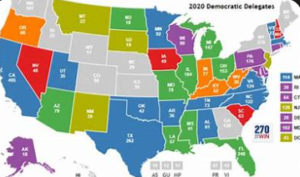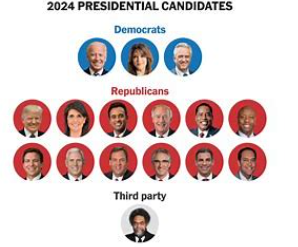As the United States gears up for another presidential election with the recently concluded Primary in New Hamshire, the process of selecting candidates to represent each political party begins with a series of primaries and caucuses.
These events, held in each state and territory, serve as the initial battlegrounds where voters express their preferences for the party’s nominee. Primaries are traditional elections where voters cast secret ballots, while caucuses involve public meetings where participants openly express their support for a candidate.
During the primary and caucus season, candidates crisscross the country, engaging in vigorous campaigning to win over voters and secure delegates who will ultimately determine the party’s nominee. The primary and caucus results provide a crucial indication of a candidate’s popularity and viability, shaping the narrative of the presidential race and influencing the decisions of voters in subsequent states.
The primary and caucus season typically begins in February or March of the election year and continues through June, with different states holding their contests on various dates.
Powerful Candidates: Delegates’ Strategic Selection

As candidates compete in primaries and caucuses, the ultimate goal is to amass a majority of delegates who will formally nominate them at the party’s national convention. Delegates are individuals chosen by each state’s party to represent its voters at the convention, and their allocation is based on the outcomes of primaries and caucuses.
The delegate allocation process varies between parties and states, with some employing proportional representation, while others utilize winner-takes-all or a combination of both. Candidates must navigate these intricacies to strategically accumulate delegates and maintain momentum throughout the primary and caucus season. As the contest progresses, candidates who fail to garner sufficient support may suspend their campaigns, leaving the field to those who continue to accumulate delegates and build momentum toward the nomination.
Becoming a presidential candidate is a complex journey involving several stages. Superdelegates in the Democratic Party add an extra layer of complexity, having the freedom to support any candidate. Endorsements can sway public opinion and enhance a candidate’s credibility. Campaign financing is pivotal, enabling candidates to finance their campaigns and indicating their support base. Televised debates offer candidates a platform to articulate policies and defend records, shaping public opinion. This journey shapes the political landscape, engaging voters nationwide.
Nomination Finale: Party’s Convention

The culmination of the primary and caucus process occurs at each party’s national convention, where delegates from across the country gather to officially nominate their presidential candidate. The conventions are highly anticipated events, characterized by grand spectacles, impassioned speeches, and intense political maneuvering.
At the convention, delegates cast their votes to select the party’s nominee, with the candidate who secures a majority of delegates being formally anointed as the presidential standard-bearer. This pivotal moment sets the stage for the general election campaign, as the party’s nominee assumes the mantle of representing their party in the quest for the presidency.
Amidst the pageantry and excitement of the national conventions, the chosen candidates deliver acceptance speeches that outline their vision for the country, rally their party faithful, and seek to broaden their appeal to a wider electorate. Following the conventions, the focus shifts to the general election campaign, where the nominees of each party engage in a fierce battle for the presidency.
Fivefold Electoral Journey
In conclusion, from primaries and caucuses to delegate allocation and national conventions, the process of Selecting presidential candidates by parties is a dynamic and intricate journey that shapes the political landscape of the United States. As candidates vie for support and delegates, they navigate a complex path toward securing their party’s nomination and ultimately competing for the highest office in the land. With each election cycle, this process unfolds anew, capturing the attention and participation of voters across the nation.












